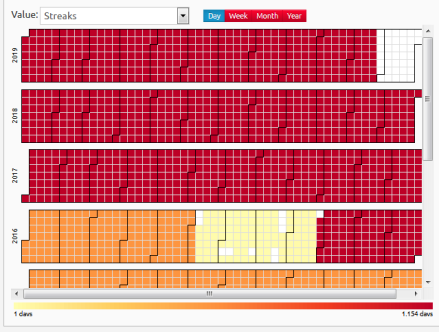There was no way that we were going to miss out on seeing Holy Island, off the north east coast. History has it that in 635AD Saint Aidan came from Iona and founded his monastery on The Holy Island of Lindisfarne. In the 16th century Lindesfarne Castle was built. More recently the island has become home to Lindesfarne mead and Pilgrims coffee, along with hundreds of tourists every day in the summer. Not so many on a wet November morning. The coffee was available at a local cafe in Alnmouth and made a very good brew, however I find mead to be a bit sweet so we didn’t try any. The island is also the starting point for both the St Oswald’s Way and the St Cuthbert’s Way long distance walks. The St Oswald’s Way is 97 miles long and finishes at Heavenfield near Hexham, at Hardian’s Wall, and we walked or ran a couple of sections of it (read about it here and here). St Cuthbert’s Way is 62.5 miles long and crosses the borders to finish at Melrose Abbey.
For those of you that don’t know, there is a causeway between the mainland and the island which becomes impassible at high tide. There is a very helpful website that lists the times for when it is safe to cross and when it isn’t. We set off from our cottage in Alnmouth in the dark, as the ‘safe to cross’ window for that day opened at just after 7am.
I had purchased an Ordnance Survey Explorer map of the area (1:25,000 scale) which showed a small car park on the mainland side of the causeway. Our plan was to park up and then run across to the island, have a quick look around, and then run back. Small problem, the map was last updated in 2009 and since then the car park has been closed. We therefore had little option but to drive across the causeway and park up on the island. This actually worked out for the best, as there was a very heavy hail storm, and because the causeway was close to 4 miles long.

Once on the island we waited in the car for the hail to stop. Helen, my beautiful wife, wasn’t feeling up for a run in hail, but a couple of minutes later it stopped hailing and we set off running (gently). First stop was the remains of the priory, where we manged to take a couple of stunning photos of the castle as the sun came up.
This early in the morning the castle was obviously closed, but we had a good look as we ran past. It was in very good condition and almost looked as though people still lived there.

It was cold but not raining or hailing, so we decided to have a look at following some of the numerous footpaths and see if we could complete a full lap of the island.
Standing on Emmanuel Head, at the north eastern point of the island, is a 35 foot high beacon. It was built between 1801 and 1810 to aid sailors, as this section of coast was notorious for shipwrecks, with over 700 deaths in one year alone. A small headland about one mile to the west has almost identical features, giving it the name ‘False Emmanuel Head’. Sailors would turn their ships to the south at the false head and hit the rocks. It is thought that this was the first ‘daymark’ beacon to be built in the UK. Two further, much larger beacons, were later built across from the island on Guile Point to guide ships into the harbour.

Unfortunately from Emmanuel Head the coastal footpath was on dunes, so we turned inland and made it back to our car just as it started to rain again. Even though our little run was less than 5 miles, it was one of the best runs that I have ever done. Thank goodness that the mainland car park was closed, as a run across the causeway would no way have matched what we ended up doing.
It turns out that the car park had been closed a few years ago by the farmer who owned it, as it was being used by wild campers who were dumping waste in his fields. The farmer had also set up a campsite near to the Beal Barn. Finally, about ten minutes after we set off for home, another huge hailstorm hit us on the A1.















You must be logged in to post a comment.